Hamsters can make great pets. But there are different types of hamsters, and not all hamsters are the same. The size, body shape, diet, and behavior of different hamster varieties vary greatly. The way they interact with humans and other members of the same species, too, differs.
So, if you are planning on buying a hamster, it is important to find out which type of hamster suits you the most. But don’t worry. We’ve got you covered.
This blog post will explain everything you need to know about the different species of hamsters. By the time you finish reading it, you will know which hamster is right for you.
- Different types of hamsters
- Pet Hamsters
- Wild hamsters
- 6. Turkish hamster
- 7. Romanian hamster
- 8. Ciscaucasian hamster
- 9. Tibetan dwarf hamster
- 10. Chinese striped hamster
- 11. Kam dwarf hamster
- 12. Long-tailed dwarf hamster
- 13. Grey dwarf hamster
- 14. Sokolov's dwarf hamster
- 15. European hamster
- 16. Mongolian hamster
- 17. Eversmann's hamster
- 18. Gansu hamster
- 19. Greater long-tailed hamster
Different types of hamsters
There are at least 19 species of hamsters in this world (Source: Wikipedia). But only five of them are kept as pets.
The different hamster species have some similarities and some dissimilarities.
The first similarity is that they all belong to the subfamily Cricetinae of rodents. This subfamily of rodents has incisors that constantly grow until they die, cheek pouches that help them carry food, short tails, and terrible eyesight. They are mostly active at dawn and dusk rather than during the day or night.
But if you are planning to have a hamster as a pet, you should be more aware of the dissimilarities between hamster species so that you can choose the hamster that best suits your lifestyle.
Different varieties of hamsters differ in terms of appearance, social behavior, food habits, and activity. Therefore, depending upon the hamster breed you choose to buy, your lifestyle can change considerably (that is, of course, considering that you are a responsible pet owner who is willing to change in order to accommodate a pet in his life).
So, let’s find out how different hamster species differ from each other. It can help you figure out which hamster species is the most suitable one for you.
First, let’s look at the five species of pet hamsters:
Pet Hamsters
1. Syrian hamsters
Genus: Mesocricetus
Scientific name: Mesocricetus auratus
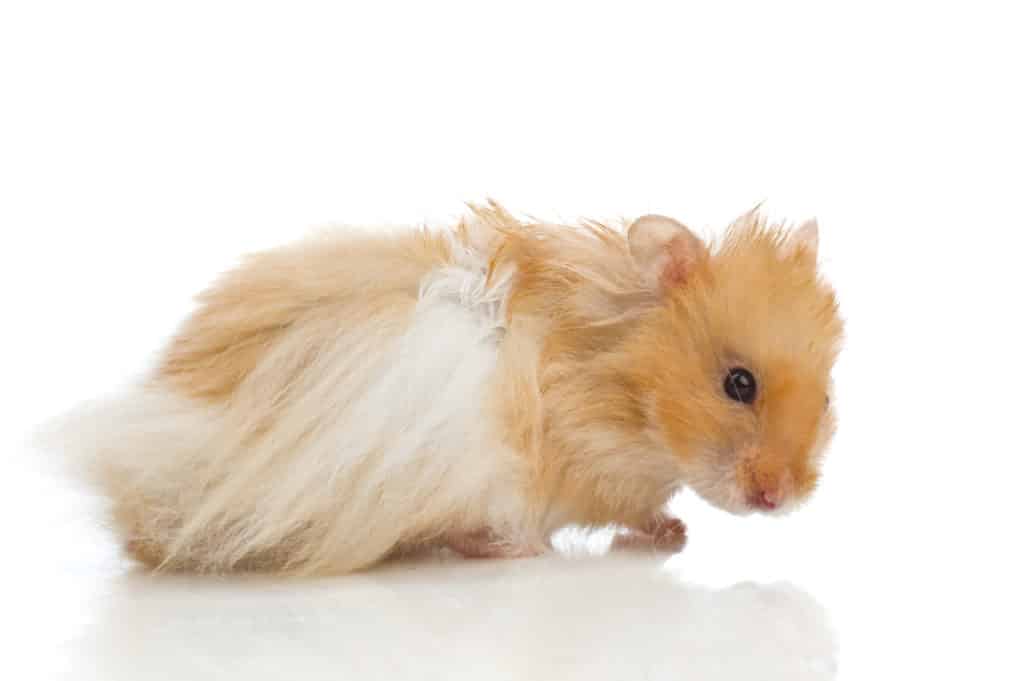
Syrian hamsters are the most common type of pet hamsters. Regardless of which corner of the world you are in, you can buy these creatures from pet stores or hamster breeders in or near your city.
Syrian hamsters are the largest hamster species. They are also known as golden hamsters. They can grow up to 9 inches in length and weigh 5.3 ounces.
Syrian hamsters originate from Syria. That is why they are called Syrian hamsters. In the wild, they live in tunnels under the ground so that the temperature variations above the ground do not affect them much.
Syrian hamsters are strictly solitary and fiercely territorial animals. So, if you keep two of them in the same cage, they will fight each other until one of them dies. Even if you keep them in separate cages in the same room, they will be able to smell each other. Then they will get stressed if they can’t fight the other hamster and eliminate them from their territory. So, if you plan to buy more than one Syrian hamster, you should keep them in separate cages in different rooms.
But even though Syrian hamsters are not friendly towards their own kind, they can quickly become friends with humans. And since they are bigger than other pet hamster species as well, they are best for first-time pet owners and kids more than 6 years old.
Syrian hamsters can live for two to four years in captivity. But they need a good, stimulating environment to live healthily and happily. A cage that is big enough with lots of hamster toys placed in a room that isn’t too loud or too bright is ideal for a Syrian hamster.
Syrian hamsters can also become quite attached to their owners once tamed. So, if your Syrian hamster gets attached to you and you suddenly stop spending time with him, he could get depressed.
Syrian hamsters are crepuscular animals that are active at dawn and dusk.
If you would like to read more about Syrian hamsters, check out our blog post on Syrian hamsters.
2. Campbell hamsters
Genus: Phodopus
Scientific name: Phodopus campbelli
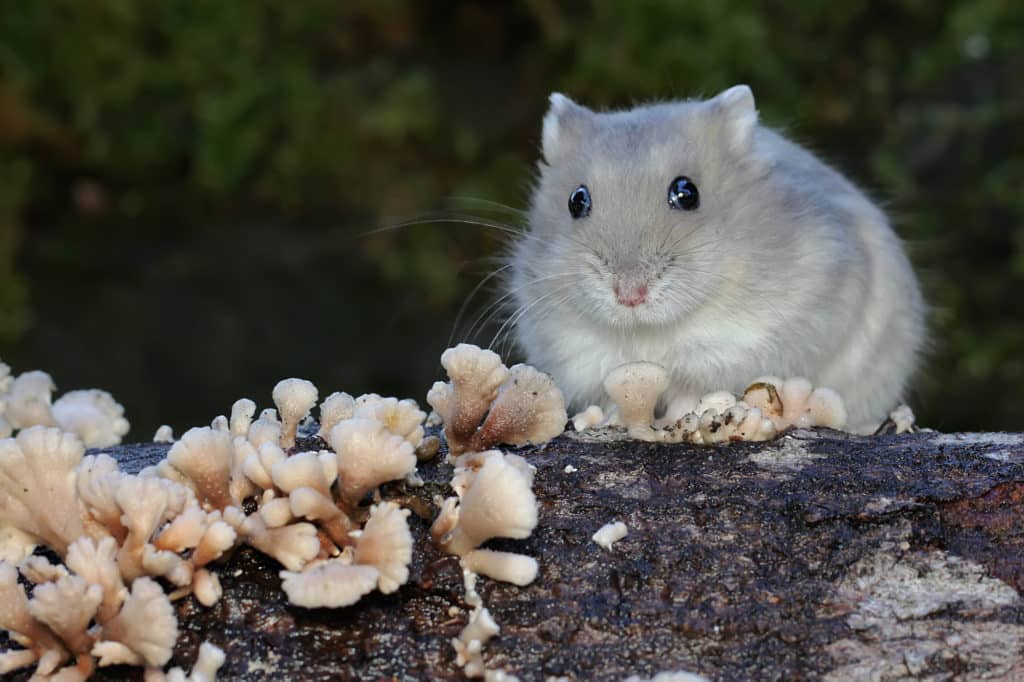
Campbell hamsters are one of the four dwarf hamster breeds that are kept as pets. They are called dwarf hamsters because they are smaller when compared to Syrian hamsters. Campbell hamsters can grow up to 4 inches in length and can weigh up to 2 ounces.
In the wild, Campbell hamsters are found in Kazakhstan, Mongolia, China, and Russia. Like Syrian hamsters, they live in burrows located several feet below the ground. This helps them survive the extreme temperatures in these regions.
Unlike Syrian hamsters, Campbell hamsters can be social with members of their species. In the wild, they are found sharing their burrows with other animals. So, they can be housed in pairs or in groups. But fallouts can still happen. So, keeping an eye over them at all times is important if you decide to house more than one Campbell hamster in a cage.
But on the other hand, while Syrian hamsters are friendly toward humans, Campbell hamsters could become grumpy when annoyed. So, sometimes it is better to leave them alone. But if you decide to handle them, it is important to start handling them when they are young. However, they are not suitable for children and first-time pet owners.
As in the case of Syrian hamsters, they need a stimulating environment to stay healthy. So, they need a big cage (not as big as a Syrian hamster cage), hamster toys like the hamster wheel, chew toys, and a room that isn’t too bright or too loud.
Campbell hamsters are mostly nocturnal. But they may wake up and stay active during the day for short periods of time.
If you want to know more about Campbell hamsters, check out our blog post on Campbell hamsters.
3. Winter White hamsters
Genus: Phodopus
Scientific name: Phodopus sungorus
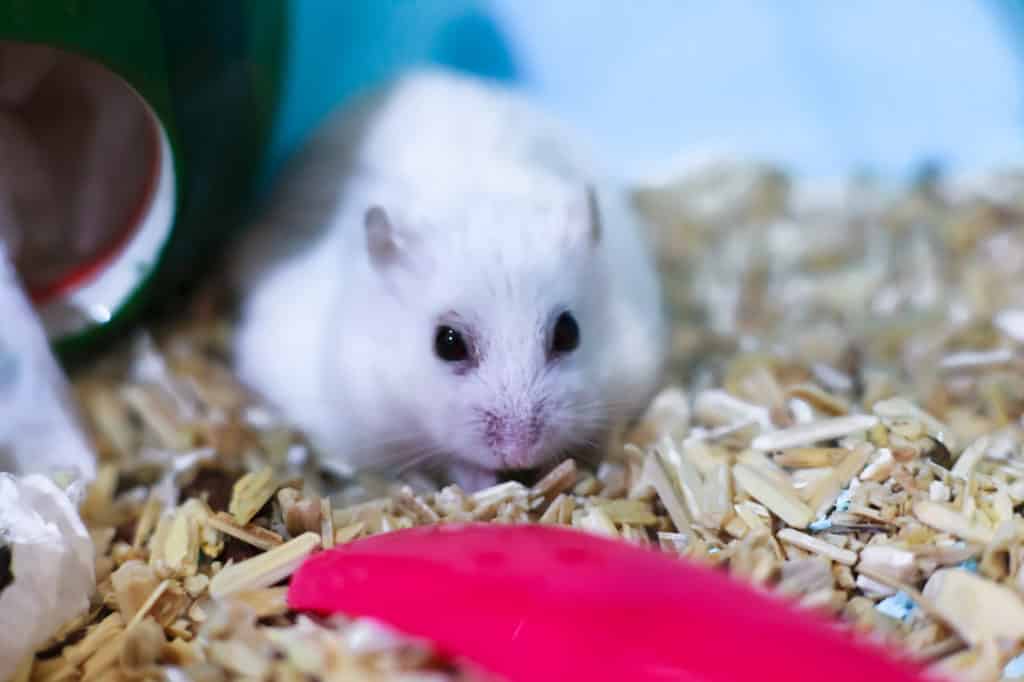
Another common hamster that is kept as a pet is the Winter White hamster. It is a dwarf hamster that goes by many names – Djungarian hamster, Russian hamster, Siberian hamster, Winter White dwarf hamster, etc. They can grow up to 3 inches in length and can weigh up to an ounce.
Winter White hamsters are found in Kazakhstan, Siberia, Mongolia, and Manchuria. They are covered with greyish brown fur, which becomes white in winter (only in the wild, not when kept as pets), providing them a perfect camouflage in the snow-covered areas where they live. This provides them protection against predators.
Like Campbell hamsters, Winter White hamsters are also social towards other members of their species. So, you can put a pair or even a group of them in a single cage. But the cage should be big enough for multiple hamsters to run around and play. Moreover, the cage should also contain many hamster toys so that fights don’t break out between them when two hamsters want to use the same toy.
Winter White hamsters can become friendly with humans when tamed properly. However, due to their small size, they may wriggle in your hands when you try to hold them and fall down. So, they are not suitable for first-time pet owners and children.
Winter White hamsters are nocturnal animals. So, they may sleep through most part of the day. They might only wake up in the day and remain active for some time in between naps.
Winter White hamsters can live for two years in captivity when taken care of properly.
If you want to find out how you can take care of a Winter White hamster properly, check out our blog post on Winter White hamsters.
4. Chinese hamsters
Genus: Cricetulus
Scientific name: Cricetulus griseus
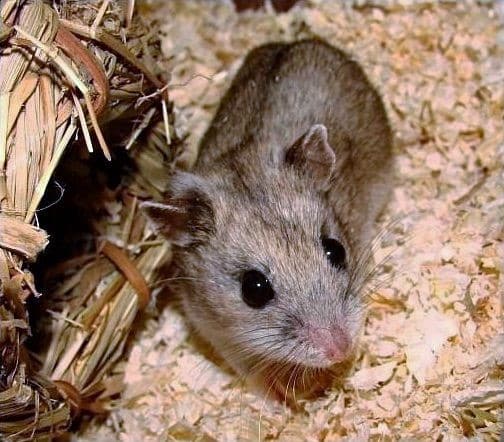
Another species of dwarf hamster that is kept as a pet is the Chinese hamster. Chinese hamsters can grow up to 5 inches in length and weigh up to 2 ounces.
One difference between Chinese hamsters and other pet dwarf hamsters is that they have long tails. This makes them look more like a rat than a hamster. So, they are also known as rat hamsters.
Chinese hamsters come from the deserts of China and Mongolia.
Unlike Syrian hamsters that are hostile towards members of their own species and other pet dwarf hamsters that are social towards their own species, Chinese hamsters are a little bit different. Their social behavior towards members of their own species can differ from one individual to the next, particularly based on how they grew up. So, even though Chinese hamsters are hostile towards other Chinese hamsters in the wild, breeders and several pet owners have found success in keeping them in pairs and even in groups.
If you do decide to keep more than one Chinese hamster in a single cage, make sure the cage is big enough for multiple hamsters and contains enough hamster toys.
Chinese hamsters can make great pets once tamed. However, they are not suitable for first-time pet owners and children because their small size makes it different to hold them.
Like the other pet dwarf hamsters, Chinese hamsters are also nocturnal for the most part. But they may wake up and stay active for very brief periods during the day in between their naps.
Chinese hamsters can live for 2 to 3 years in captivity when taken care of properly.
If you want to find out more about Chinese hamsters, check out our blog post on Chinese hamsters.
5. Roborovski hamsters
Genus: Phodopus
Scientific name: Phodopus roborovskii

Another species of dwarf hamster that is kept as a pet is the Roborovski hamster. It is the smallest among all hamster species. Roborovski hamsters grow up to just 2 inches in length and weigh just 0.88 ounces. But don’t let their small size fool you. Because despite their small size, they are far more active when compared with other pet hamsters. They can run up to 6 miles in one night.
Roborovski hamsters don’t have the dorsal stripe found in other pet dwarf species.
They are found in the wild in China, Mongolia, and Kazakhstan.
Roborovski hamsters are social with other members of their own species. So, they can be kept in pairs or small groups. But if more than one hamster is housed in a single cage, the cage should be big enough to house them. Moreover, the cage should contain enough hamster toys so that squabbles over toys don’t occur.
Roborovski hamsters can be easily tamed. They are friendly towards humans and hence, don’t bite when you try to hold them. However, they may wriggle when you hold them. Their wriggling behavior and small size make it difficult to hold them because they might wriggle from your hands and fall down. So, experienced pet owners are more suited to handling them. Hence, they are not suitable for first-time pet owners and children.
Like Syrian hamsters, Roborovski hamsters are also crepuscular. They are active during dawn and dusk rather than throughout the day or throughout the night.
Roborovski hamsters live for 2 to 3 years in captivity when taken care of properly.
If you want to find out more about Roborovski hamsters and how to take care of them properly, check out our blog post on Roborovski hamsters.
Now that you have learned something about each of the five pet hamster species, let’s continue and look at the 9 types of wild hamsters.
Wild hamsters
First, let’s look at the remaining members of the genus Mesocricetus, to which the Syrian hamsters belong.
6. Turkish hamster
Genus: Mesocricetus
Scientific name: Mesocricetus brandti
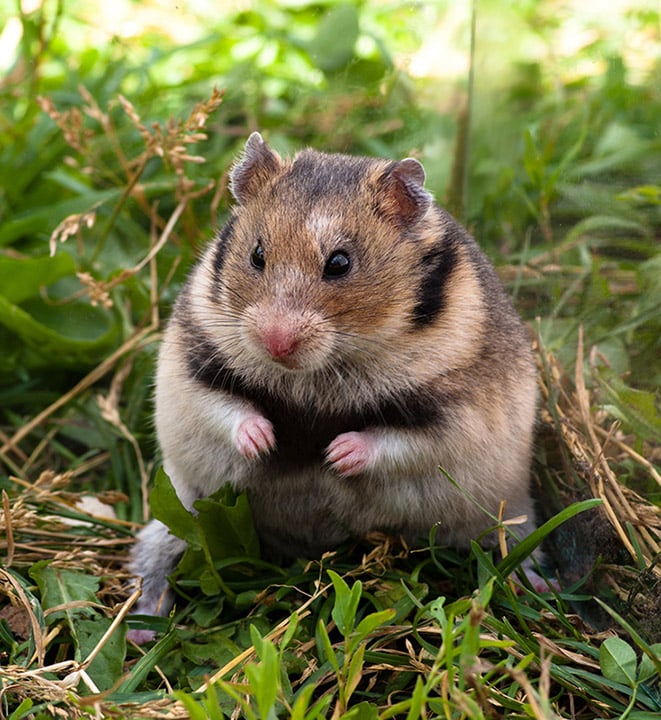
Also known as Brandt’s hamster or Azerbaijani hamster, the Turkish hamster is a close relative of the Syrian hamster (Source: Wikipedia).
They are found across Europe and Asia. They dig tunnels up to six feet deep in the ground where they live.
The Turkish hamster was first discovered in 1878. But unlike Syrian hamsters, Turkish hamsters are aggressive and hence, only rarely kept as pets. They are mostly only used as laboratory animals, despite the fact that their population is steadily declining.
Like Syrian hamsters, Turkish hamsters are also solitary animals.
They are nocturnal animals that sleep during the day and forage for food at night.
They have a lifespan of 2 years.
One difference between the Turkish hamster and the pet hamster species is the fact that Turkish hamsters can hibernate. When it gets too cold in the winter, the Turkish hamster starts hibernating. During this time, it wakes up only for one or two days per week.
7. Romanian hamster
Genus: Mesocricetus
Scientific name: Mesocricetus newtoni
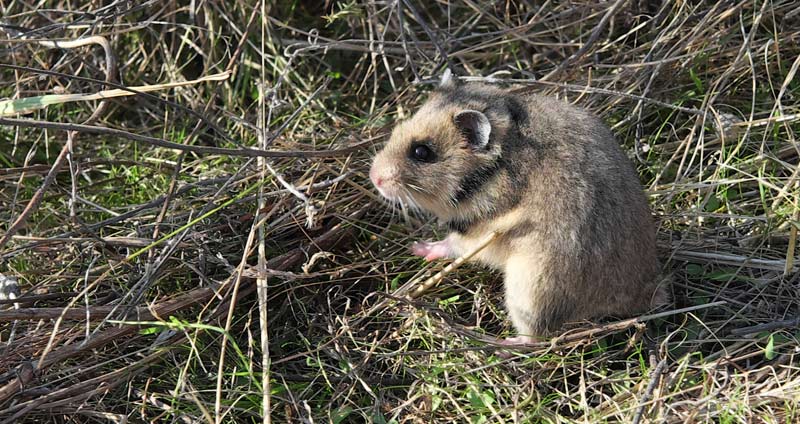
The Romanian hamster is another member of the genus Mesocricetus.
The Romanian hamster can grow up to 7 inches in length and weighs up to 4 ounces (Source: Wikipedia). It is mainly found in Bulgaria and Romania.
Like Syrian hamsters and Turkish hamsters, Romanian hamsters are also solitary animals.
In the wild, they can be either nocturnal or crepuscular.
8. Ciscaucasian hamster
Genus: Mesocricetus
Scientific name: Mesocricetus raddei
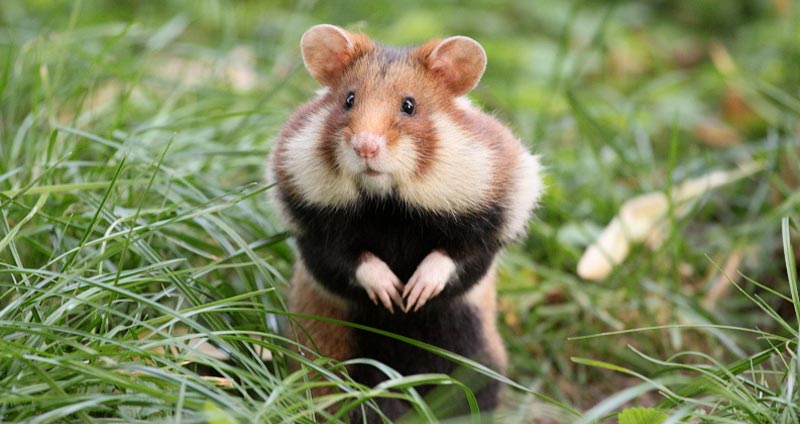
The Ciscaucasian hamster is the last member of the genus Mesocricetus. It is found mostly in Russia (Ciscaucasia is a part of Russia) and Georgia. So, it is also called the Georgian hamster.
This hamster species can grow up to 11 inches long.
It is found in plains and mountains near pastures and cultivated fields. This hamster can hibernate for up to six months, depending on the latitude and the temperatures outside. It stores a lot of food (up to 35 pounds) in its burrows, which it normally eats in the spring after waking up from the hibernation. Since the food that the Ciscaucasian hamster stores in its burrow come from the nearby fields, it is considered an agricultural pest.
It is sometimes hunted for its fur.
The Ciscaucasian hamster is a nocturnal animal.
Now that we have looked at all the hamsters of the Genus Mesocricetus, let’s look at the hamsters of the genus Cricetulus, to which Chinese hamsters belong.
9. Tibetan dwarf hamster
Genus: Cricetulus
Scientific name: Cricetulus alticola
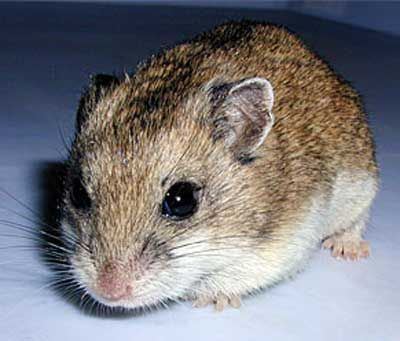
The Tibetan dwarf hamster is another member of the Genus Cricetulus, just like the Chinese hamster. The members of this genus have a longer tail when compared to the members of the other genera. So, they are also called ratlike hamsters. The Tibetan dwarf hamster grows up to 4.1 inches in length, not including its tail which could be up to 1.5 inches long.
Despite its name, the Tibetan hamster is not only found in Tibet. It is also found in India, China, and Nepal. Just like other hamsters, Tibetan dwarf hamsters also live in tunnels under the ground. These tunnels are located up to 20 inches under the ground (Source: Wikipedia).
Tibetan dwarf hamsters can be active during the day as well as the night. Therefore, they are diurnal and nocturnal.
10. Chinese striped hamster
Genus: Cricetulus
Scientific name: Cricetulus barabensis
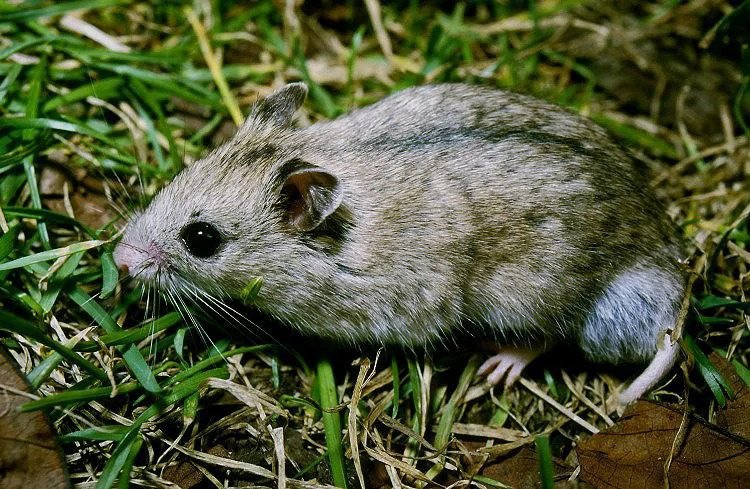
The next hamster in the Genus Cricetulus is the Chinese striped hamster. There is great confusion regarding the Chinese hamster and the Chinese striped hamster. Some people consider these hamsters different species, whereas some people consider them as belonging to the same species. There are also people who consider one of these hamster species as the subspecies of the other.
But confusions aside, an adult Chinese striped hamster can be up to 4.6 inches long with a one-inch long tail and can weigh up to 1.2 ounces.
Several Chinese striped hamsters can live in one burrow located up to half a meter under the ground.
They are mostly active at night, especially during the early hours (Source: Wikipedia).
11. Kam dwarf hamster
Genus: Cricetulus
Scientific name: Cricetulus kamensis

Kam dwarf hamster is another member of the genus Cricetulus.
Like other ratlike hamsters, Kam dwarf hamsters, too, have a longer tail in comparison to hamsters from other genera. An adult Kam dwarf hamster can measure up to 4.4 inches in length with a tail that is up to 2.5 inches long.
Kam dwarf hamsters are found in the mountain regions of Western China at altitudes of 3,300 to 4,100 meters.
Like Tibetan dwarf hamsters, they live in tunnels located 20 inches under the ground (Source: Wikipedia).
12. Long-tailed dwarf hamster
Genus: Cricetulus
Scientific name: Cricetulus longicaudatus
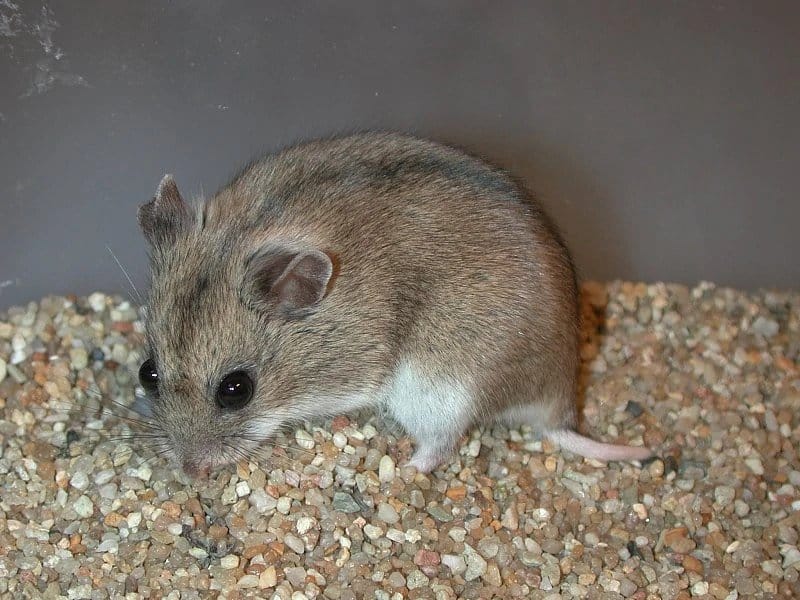
As their name implies, Long-tailed dwarf hamsters have long tails. They can grow up to 5.31 inches in length and have a tail that is almost one-third of their body length. They can weigh up to 1.76 ounces.
It is found in China, Kazakhstan, Mongolia, and Russia (Source: Wikipedia). They inhabit dry forests, shrubby slopes, and rocky steppes. They dig their burrows often under boulders. Long-tailed dwarf hamsters may also take over abandoned burrows dug by other animals. They store their food in their burrows. The excess food is used in winter when temperatures are low and foraging for food becomes difficult.
Long-tailed dwarf hamsters are nocturnal by nature. The areas where they live are in danger of immediate drought. The plants in the regions where they live are often grazed by livestock. But it is estimated that these events won’t have an impact on the population of this species.
13. Grey dwarf hamster
Genus: Cricetulus
Scientific name: Cricetulus migratorius
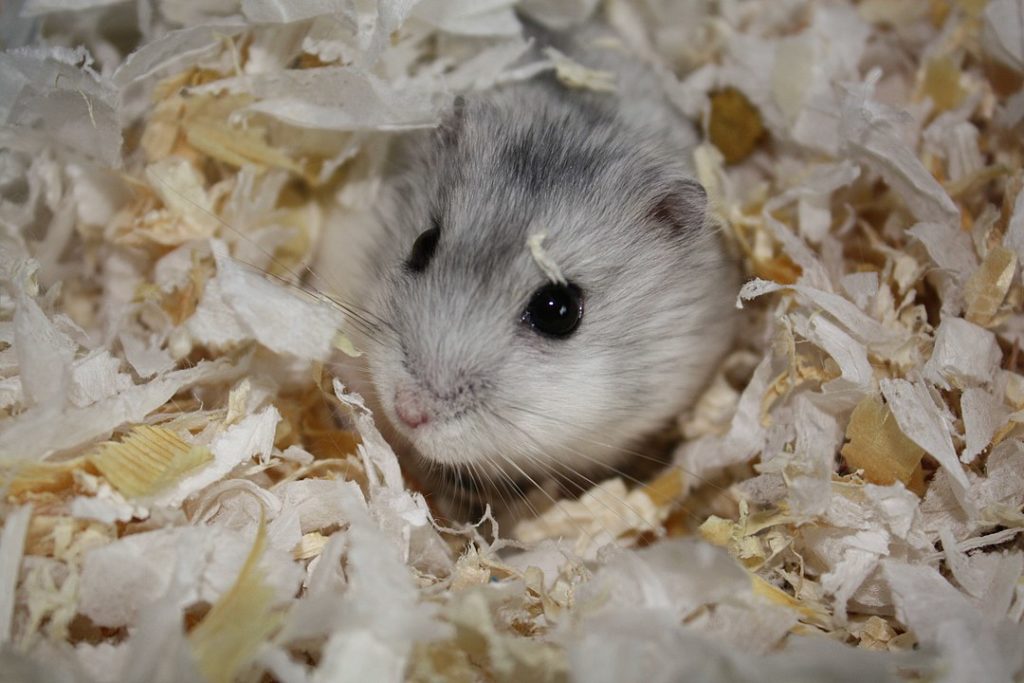
Grey dwarf hamsters are called so because they have sandish grey fur, even though their underparts are white in color.
Adult Grey dwarf hamsters can be up to 4.7 inches in length. Just like the Long-tailed dwarf hamsters, the length of their tails can be one-third of their body lengths. They weigh up to 2 ounces.
The Grey dwarf hamster is another hamster that belongs to the Genus Cricetulus, to which Chinese hamsters belong. They are found in several countries across Asia and Europe in rocky areas. In some countries like Armenia and Kazakhstan, they are more common than the house mouse. They dig deep burrows (up to 5 feet below the ground) where they live (Source: Wikipedia).
Grey dwarf hamsters are nocturnal by nature and are active at dusk and night.
14. Sokolov’s dwarf hamster
Genus: Cricetulus
Scientific name: Cricetulus sokolovi
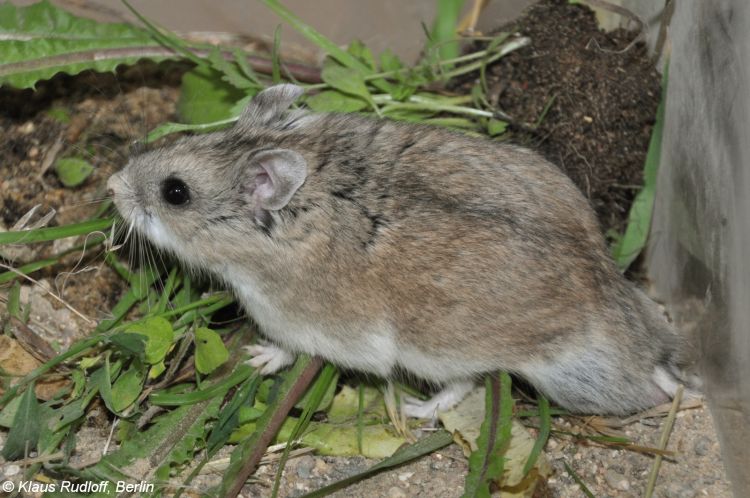
The Sokolov’s dwarf hamster is the last hamster in the genus Cricetulus. It was named after the Russian zoologist Vladimir E. Sokolov, who organized numerous zoological expeditions in the USSR and several other countries. It was initially considered to be a subspecies of the Chinese hamster. But since 1988, it has been classified as a separate species (Source: Wikipedia).
These dwarf hamsters can grow up to 4.5 inches in length, with their tails being (up to) 1.26 inches long.
They are known to live in burrows dug under desert shrubs in loose sand. They are mostly found in China and Mongolia.
Until now, we looked at the hamster species which belong to the Genus Mesocricetus (Syrian hamster, Turkish hamster, Romanian hamster, and Ciscaucasian hamster), Genus Phodopus (Campbell hamster, Winter White hamster, and Roborovski hamster) and Genus Cricetulus (Tibetan dwarf hamster, Chinese dwarf hamster, Kam dwarf hamster, Long-tailed dwarf hamster, Grey hamster, and Sokolov’s dwarf hamster).
Now let’s look at the varieties of hamsters that belong to the other three lesser-known genera.
15. European hamster
Genus: Cricetus
Scientific name: Cricetus cricetus
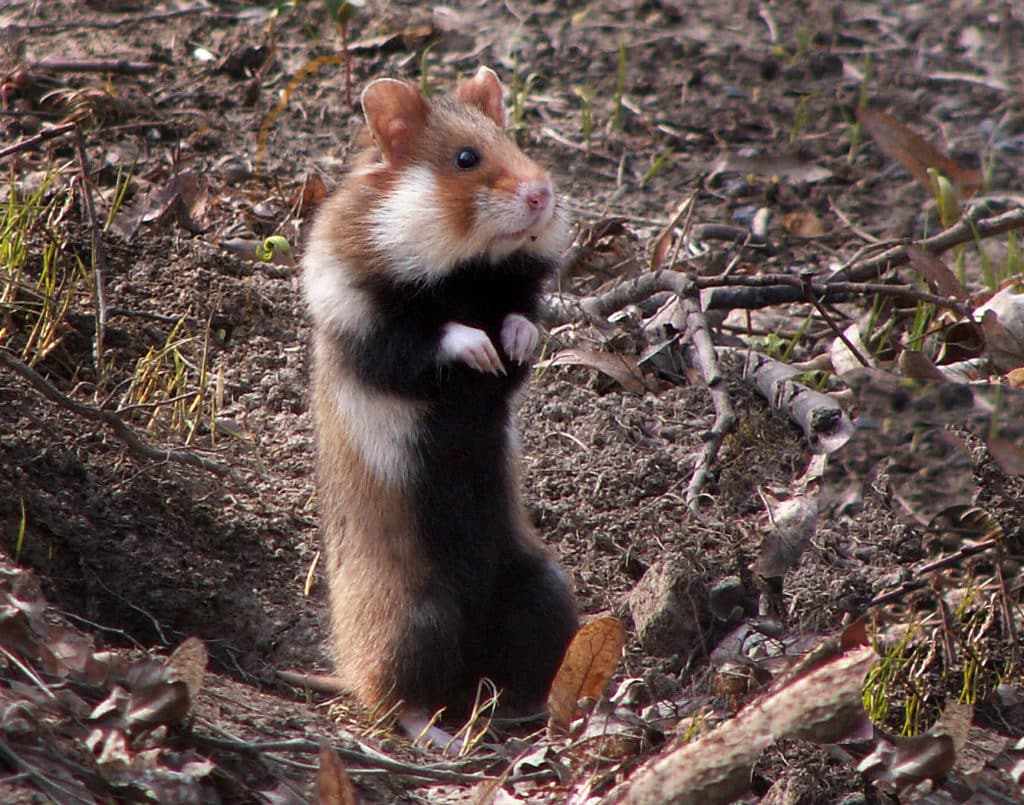
The European hamster is the only hamster species in the genus Cricetus. It is also known as the Eurasian hamster and the common hamster.
The European hamster is bigger than all pet hamsters. It can grow up to 14 inches in length and can weigh up to 16.2 ounces. Its tail can grow up to 2.4 inches long.
This species of hamster hibernates between October and March. In anticipation of its hibernation, it stores a lot of food (normally 2 to 3 kgs, but can be up to 65 kgs in exceptional cases), like seeds, root vegetables, legumes, etc., in its burrows (Source: Wikipedia). During hibernation, it wakes up once every five to seven days and eats the stored food.
The European hamster was once very abundant (hence, the name common hamster) and found in several countries across Eurasia. But it was considered an agricultural pest and was hunted for a long time. Moreover, it was also hunted for its fur. So, its population has declined exponentially. Currently, it has been declared a critically endangered species, which means that it has a high chance of going extinct in the wild.
European hamsters can be nocturnal or crepuscular.
16. Mongolian hamster
Genus: Allocricetulus
Scientific name: Allocricetulus curtatus
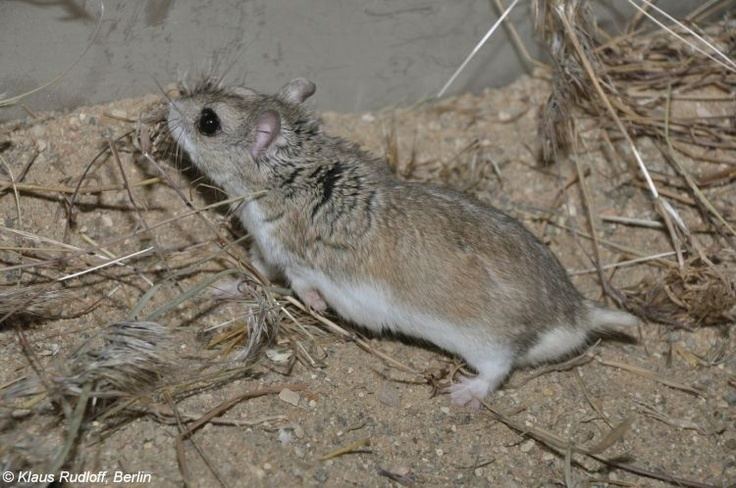
The Mongolian hamster is found in Mongolia and China. The Mongolian hamsters are wild and cannot be tamed (Source: Wikipedia).
17. Eversmann’s hamster
Genus: Allocricetulus
Scientific name: Allocricetulus eversmanni
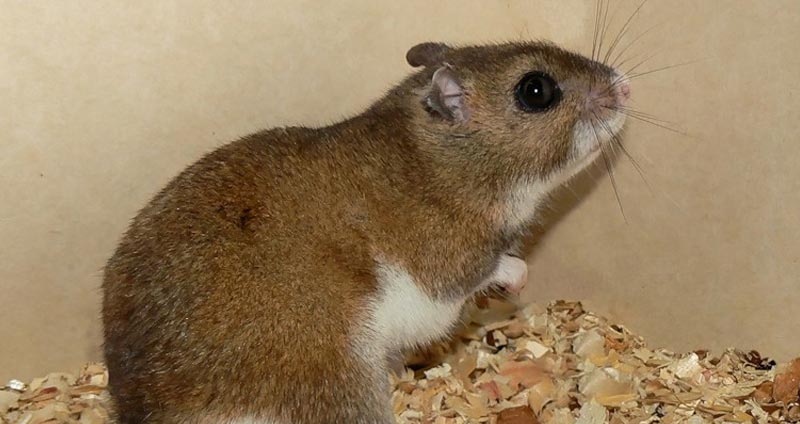
Another hamster species that belongs to the same genus as the Mongolian hamster is Eversmann’s hamster. It was named so in honor of the Prussian biologist, naturalist, and explorer Eduard Friedrich Eversmann, who was a pioneer in the research of animal and plant species in several parts of Russia. Besides the Evermann’s hamster, species of birds, insects, and butterflies have been named after him.
Evermann’s hamsters are native to Kazakhstan and found mostly only there (Source: Wikipedia).
18. Gansu hamster
Genus: Cansumys
Scientific name: Cansumys canus
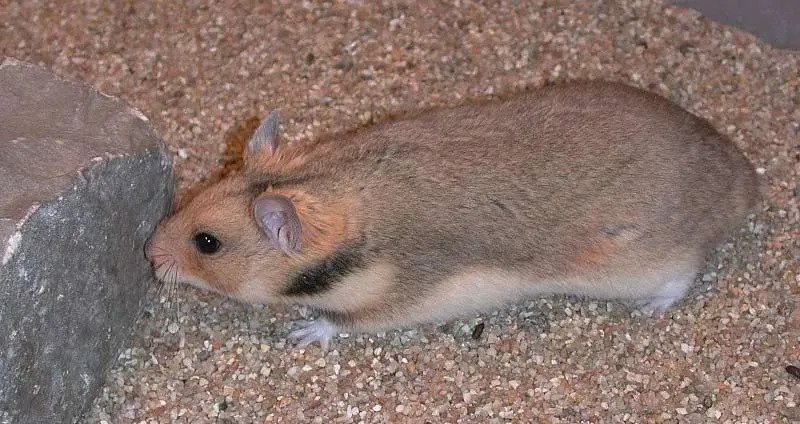
The Gansu hamster is the only hamster species classified under the genus Cansumys. It is native to China and is found mostly only there (Source: Wikipedia).
19. Greater long-tailed hamster
Genus: Tscherskia
Scientific name: Tscherskia triton

The Greater long-tailed hamster is the only hamster in the genus Tscherskia. It is found in Siberia, Korea, and China. Since ancient times, it has been considered an agricultural pest in China since it eats crops and damages plants throughout the year.
Both the male and female hamsters of this species can be aggressive. While female hamsters are aggressive mostly during the non-breeding season, the males are aggressive almost throughout the year.

